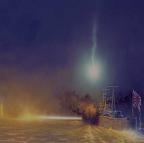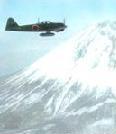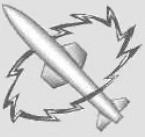Mike Solli
Posts: 15792
Joined: 10/18/2000
From: the flight deck of the Zuikaku
Status: offline

|
I have a request for a ship that doesn't appear in stock but historically was in the Pacific: LST-66. The reason I'd like to see her is because my Uncle spent the war on her and survived (barely) the kamikaze hit on her.
History:
USS LST-66
LST Flotilla 11, Group 31, Division 61
The Coast Guard-manned USS LST-66 was laid down at Jeffersonville, Indiana, by the Jeffersonville Boat and Machine Company and commissioned on 12 April 1943 with a complement of 8 officers and 66 enlisted men of the U. S. Coast Guard and Coast Guard Reserve. She was sponsored by Mrs. A. D. Landwehr. Her first commanding officer was LT Howard A. White, USCG. In April 1943 she proceeded down the Ohio and Mississippi Rivers and dry-docked on 15 May 1943, at New Orleans for final inspection, painting and repairs.
On May 21, 1943, she sailed from New Orleans for Brisbane, Australia via the Panama Canal, arriving there August 1, 1943 and being assigned to LST Flotilla 7, Seventh Fleet on October 10, 1943. Her first mission was the support landing at Finschafen, New Guinea, on October 25, 1943. She was in the landing at Lee, New Guinea, on December 7, 1943, and at Cape Gloucester, New Britain on December 26, 1943. In this engagement two men were killed and seven wounded from near miss bombs during an enemy air raid. The LST-66 was officially credited with shooting down three Japanese planes.
On January 19, 1944, the LST-66 was engaged in landing first support forces at Saidor, New Guinea. On completion of this mission she was ordered to join Group 21, Division 41, LST Flotilla 7 as of 1 February 1944. From then until August 1944 she was engaged in the following operations:
9 March 1944: first assault landing, Seeadler Harbor, Admiralty Islands
23 April 1944: first support landing, Tanah Merah Bay, New Guinea
16 May 1944: first support landing, Aitape, New Guinea
19 May 1944: first support landing, Wakde Island, Dutch New Guinea
8 June 1944: first reinforcement landing, Biak Island, Schouten Islands
16 July 1944: first reinforcement landing, Noemfoor Island
30 July 1944: first assault landing; Cape Sansapor, Dutch New Guinea
After the Sansapor landing and, returning with reinforcements, the LST-66 was dry-docked at Alexishafen, New Guinea, from 20 - 23 August 1944, and on the completion of repairs participated in the first reinforcement landing on the south coast of Morotai, in the Moluccas. On 20 October 1944, she participated in the assault landing on Leyte, Philippine Islands. On 12 November 1944, following the landing a Japanese suicide plane crashed on the boat deck, starboard side aft, killing eight men and wounding 14 of the gun crews.
On 11 January 1945, the LST landed a part of the first reinforcements at Lingayen Gulf, Luzon, Philippine Islands, one of the Army troops being wounded during the landing by artillery fire. On 5 March 1945, an Army enlisted man fell overboard from an LCM being towed by the LST-66 and was lost at sea. On March 10, 1945, she participated in the first assault landing at Zamboanga, Mindanao, and on completion of the mission, returned to Leyte, being dry-docked for repairs on 19 - 20 March 1945. From March to June 1945 she was employed in transporting troops equipment and supplies from rear bases being evacuated in the Solomons and New Guinea to the forward areas in the Philippines. In July 1945 she participated in the first support landing at Balikpapan, Borneo, Netherland East Indies, the last engagement of the war.
During August and September, 1945, she was again employed in transporting troops, equipment and supplies from rear areas in the New Guinea area to forward areas in the Philippines, being dry-docked from 15 - 18 September 1945, for hull repairs and returning to transport troops and equipment from Morotai to Leyte. She then sailed to Zamboanga, arriving on 9 October 1945.
On 11 October 1945 she departed Zamboanga for Morotai, arriving there on 14 October. For the next few weeks she continued to sail between Zamboanga, Morotai, Leyte and other ports in the Philippines until she received orders to return state-side. She departed Manila on 7 November 1945 for San Francisco, via Guam, Eniwetok, and Pearl Harbor, arriving at San Francisco on 19 December 1945, reporting to Commandant, 12th Naval District, for disposal. She was decommissioned and her Coast Guard crew removed at Mare Island, California on 26 March 1946.
The USS LST-66 earned nine battle stars and the Navy Unit Commendation for her service during World War II.
|
 Printable Version
Printable Version



























 New Messages
New Messages No New Messages
No New Messages Hot Topic w/ New Messages
Hot Topic w/ New Messages Hot Topic w/o New Messages
Hot Topic w/o New Messages Locked w/ New Messages
Locked w/ New Messages Locked w/o New Messages
Locked w/o New Messages Post New Thread
Post New Thread